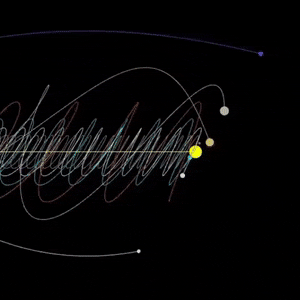Cover Design For An Italian Reprint Of Isaac Asimov’s “Foundation Trilogy” By Gabriel Björk Stiernström.

Cover design for an Italian reprint of Isaac Asimov’s “Foundation Trilogy” by Gabriel Björk Stiernström.
More Posts from Starry-shores and Others
Eclipsing Suns
I can’t remember which novel JR said influenced the world of S6, but I was recently reminded of Asimov’s Nightfall and wonder whether its eclipse narrative might have some bearing on the plot …
[Spoilers for Nightfall ahead – highly recommend you read the story (it’s short!)]
For anyone not familiar, Nightfall is set on a planet with six suns - enough suns that the planet never experiences darkness. Every 2000 years or so, the suns and the planet’s moon align just so, and an eclipse occurs. And every 2000 years, something cataclysmic occurs that ends civilization. The only records of the event are embedded in the mythology of an ancient cult’s scripture.
During one of these cycles, a team of astronomers and psychologists collaborate with the cult, and together determine that they are weeks away from the next eclipse. The scientists lock their loved ones away in a bunker and prepare equipment to document the eclipse, which they do not believe they will survive. (Having never experienced nighttime, they have a pathological fear of the dark. Even more concerning, however, is the threat of the Stars mentioned in ancient scripture, for these have the power to burn cities and drive men to madness.)
And when the eclipse occurs and people see the night sky for the first time in two thousand years, they are struck with terror and knowledge of their insignificance, and all the world over, people set their cities on fire to blot out the stars’ truth and the horror of the long night.
… What little we do know about S6 reminds me of this. Like Clarke and co., these scientists attempt to learn what happened to a lost civilization (Eligius III) while hampered by a cult-like organization (Second Dawn? Wonkru? Whoever now inhabits the planet?) that has attached mythological meaning to the natural phenomenon of the eclipse. JR has said that something crucial happens when the suns eclipse, and though suns eclipsing themselves does not create total darkness, as here, we can guess that there will be psychological ramifications attached to it.
“The stars, like dust, encircle me In living mists of light; And all of space I seem to see In one vast burst of sight.”
—
Isaac Asimov

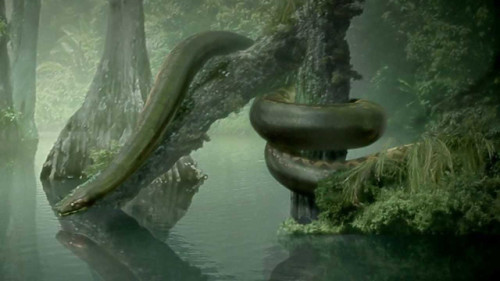

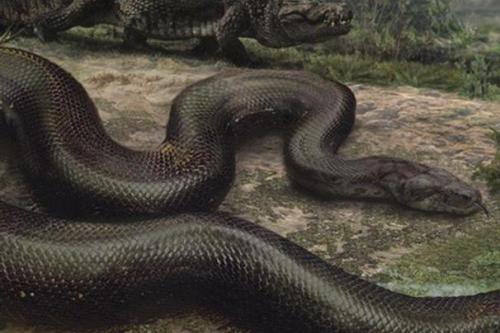
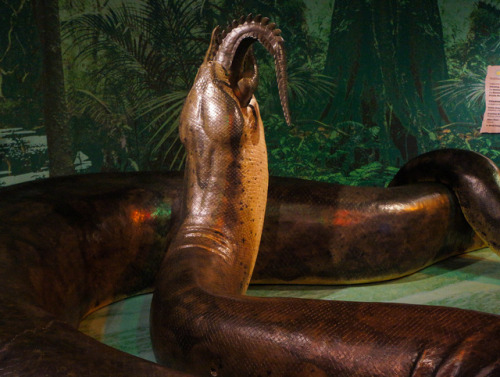


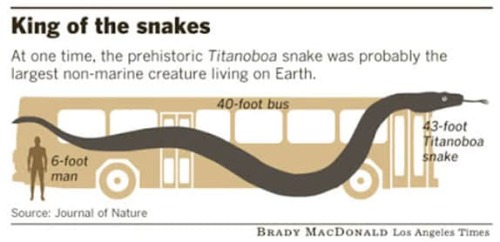
Titanoboa
Titanoboa is an extinct genus of snakes that is known to have lived in present-day La Guajira in northern Colombia. The giant snake lived during the Middle to Late Paleocene epoch, a 10-million-year period immediately following the Cretaceous-Paleogene extinction event.
The only known species is Titanoboa cerrejonensis, the largest snake ever discovered. By comparing the sizes and shapes of its fossilized vertebrae to those of extant snakes, researchers estimated that the largest individuals of T. cerrejonensis found had a total length around 42 feet and weighed about 2,500 pounds.
While initially thought to have been an apex predator of the Paleocene ecosystem in which it lived, evidence has pointed to the genus being predominantly piscivorous. Titanoboa’s massive size would have made it difficult to move on land, so the giant snake would probably have spent most of its life in the water, hunting for fish and other aquatic prey.
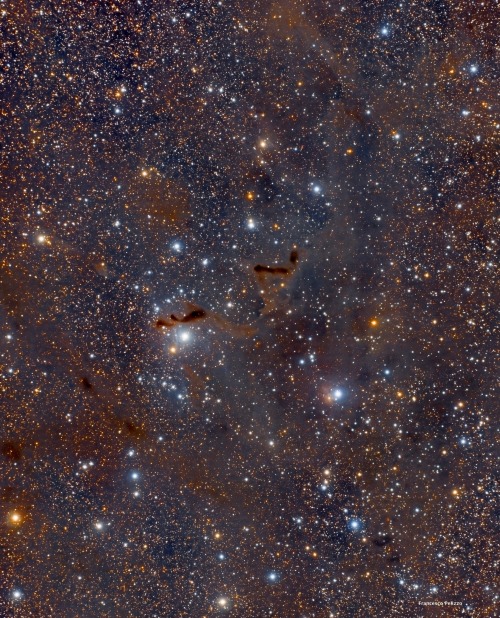
A Giving Hand, vdB9 // DocRx
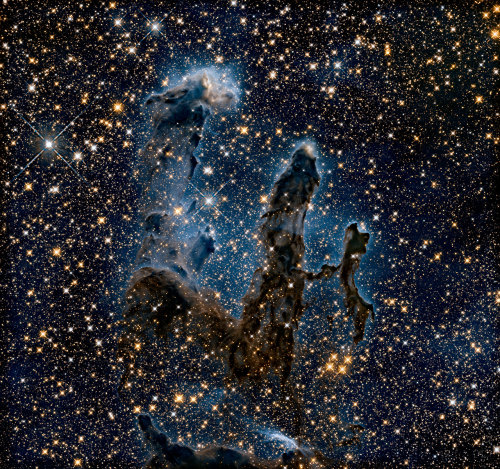
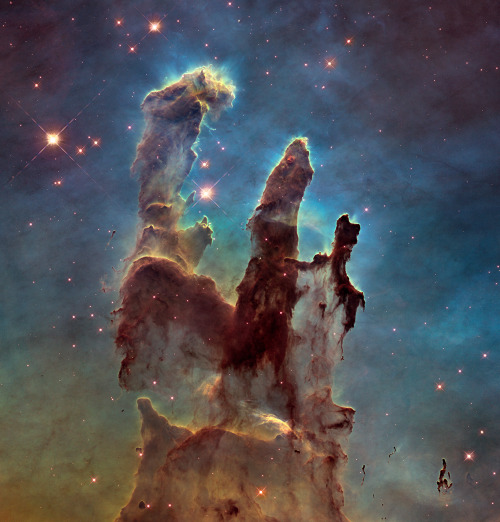
Sometimes… there’s more than meets the eye. 👀 You’re looking at two very different takes on an iconic image.
Human eyes can see only a small portion of the range of radiation given off by the objects around us. We call this wide array of radiation the electromagnetic spectrum, and the part we can see visible light.
In the first image, researchers revisited one of Hubble Space Telescope’s most popular sights: the Eagle Nebula’s Pillars of Creation. Here, the pillars are seen in infrared light, which pierces through obscuring dust and gas and unveil a more unfamiliar — but just as amazing — view of the pillars. The entire frame is peppered with bright stars and baby stars are revealed being formed within the pillars themselves. The image on the bottom is the pillars in visible light.
Image Credit: NASA, ESA/Hubble and the Hubble Heritage Team
Make sure to follow us on Tumblr for your regular dose of space: http://nasa.tumblr.com.
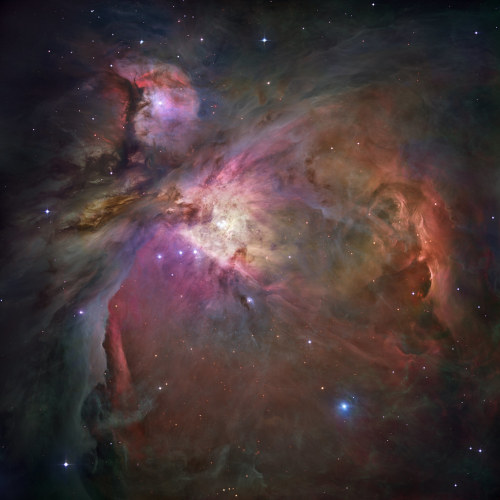
M42 by NASA Hubble
Can you tell us something about j1407b?
J1407b is an exoplanet (but it can also be a brown dwarf) very interesting, orbiting its star J1407. It is larger than Saturn or Jupiter, and is surrounded by a ring system that is about 200 times larger than the rings of Saturn, very different from what we are accustomed to see.

Thirty-seven rings extending 90 million kilometers from the planet — over half the distance from the Earth to the sun — encircle the world. These planetary rings are the first found outside the solar system.

This exoplanet is 434 light-years away in the constellation Centaurus.

J1407b could house moons that could be formed by the material of the rings. One of their moons could be as large as Mars or Earth, and could orbit between the gaps of the rings, shaping them.

Astronomers expect the rings to become thinner in the next million years and eventually disappear as they form satellites from the material of the rings.

The discovery of the J1407 system and its unusual eclipses were reported by the team led by astronomer Eric Mamajek of the University of Rochester in 2012. The orbital period of J1407b is estimated at about a decade.
Simulation of the eclipse of the star J1407 by the ring system around its putative exoplanet J1407b. Each time a ring passed in front of the star, it dimmed. When entering a gap, the star brightened up again. Graphing the highs and lows, scientists created a profile of the ring system.

What the rings of J1407b would look like in our sky (above the Old Observatory in Leiden, Netherlands) if it was located where Saturn is now.
image 1°, image 2°, image 3°, image 4, image 5° & image 7°
Here are some links if you want to read more about it: here, here and here.
How quickly do we grow accustomed to wonders. I am reminded of the Isaac Asimov story "Nightfall," about the planet where the stars were visible only once in a thousand years. So awesome was the sight that it drove men mad. We who can see the stars every night glance up casually at the cosmos and then quickly down again, searching for a Dairy Queen. (x)
-
 spiralx liked this · 1 year ago
spiralx liked this · 1 year ago -
 jump-they-say liked this · 1 year ago
jump-they-say liked this · 1 year ago -
 lazermoiseevich-blog liked this · 1 year ago
lazermoiseevich-blog liked this · 1 year ago -
 abulavia liked this · 1 year ago
abulavia liked this · 1 year ago -
 madcat-prime liked this · 1 year ago
madcat-prime liked this · 1 year ago -
 dust7software liked this · 1 year ago
dust7software liked this · 1 year ago -
 captainhowdy077 reblogged this · 1 year ago
captainhowdy077 reblogged this · 1 year ago -
 captainhowdy077 liked this · 1 year ago
captainhowdy077 liked this · 1 year ago -
 outpostzero reblogged this · 1 year ago
outpostzero reblogged this · 1 year ago -
 outpostzero liked this · 1 year ago
outpostzero liked this · 1 year ago -
 justafreeoldsoul liked this · 3 years ago
justafreeoldsoul liked this · 3 years ago -
 katti63 liked this · 3 years ago
katti63 liked this · 3 years ago -
 rdaneelolivaw reblogged this · 4 years ago
rdaneelolivaw reblogged this · 4 years ago -
 megabatoruniverse liked this · 4 years ago
megabatoruniverse liked this · 4 years ago -
 freeponi liked this · 4 years ago
freeponi liked this · 4 years ago -
 peter-iguess liked this · 4 years ago
peter-iguess liked this · 4 years ago -
 insomniacafe98 reblogged this · 4 years ago
insomniacafe98 reblogged this · 4 years ago -
 freddiemultiversetabby liked this · 4 years ago
freddiemultiversetabby liked this · 4 years ago -
 castielwho reblogged this · 4 years ago
castielwho reblogged this · 4 years ago -
 castielwho liked this · 4 years ago
castielwho liked this · 4 years ago -
 insomniacafe98 liked this · 4 years ago
insomniacafe98 liked this · 4 years ago -
 nib333 liked this · 4 years ago
nib333 liked this · 4 years ago -
 ashleighxcx reblogged this · 4 years ago
ashleighxcx reblogged this · 4 years ago -
 batmanaintapeasant reblogged this · 4 years ago
batmanaintapeasant reblogged this · 4 years ago -
 batmanaintapeasant liked this · 4 years ago
batmanaintapeasant liked this · 4 years ago -
 starry-shores reblogged this · 5 years ago
starry-shores reblogged this · 5 years ago -
 an-abyss-called-life liked this · 5 years ago
an-abyss-called-life liked this · 5 years ago -
 thevagabondthoughts reblogged this · 5 years ago
thevagabondthoughts reblogged this · 5 years ago -
 thevagabondthoughts liked this · 5 years ago
thevagabondthoughts liked this · 5 years ago -
 liquidink21 reblogged this · 5 years ago
liquidink21 reblogged this · 5 years ago -
 thisisenigmaville liked this · 5 years ago
thisisenigmaville liked this · 5 years ago

Amateur astronomer, owns a telescope. This is a side blog to satiate my science-y cravings! I haven't yet mustered the courage to put up my personal astro-stuff here. Main blog : @an-abyss-called-life
212 posts
